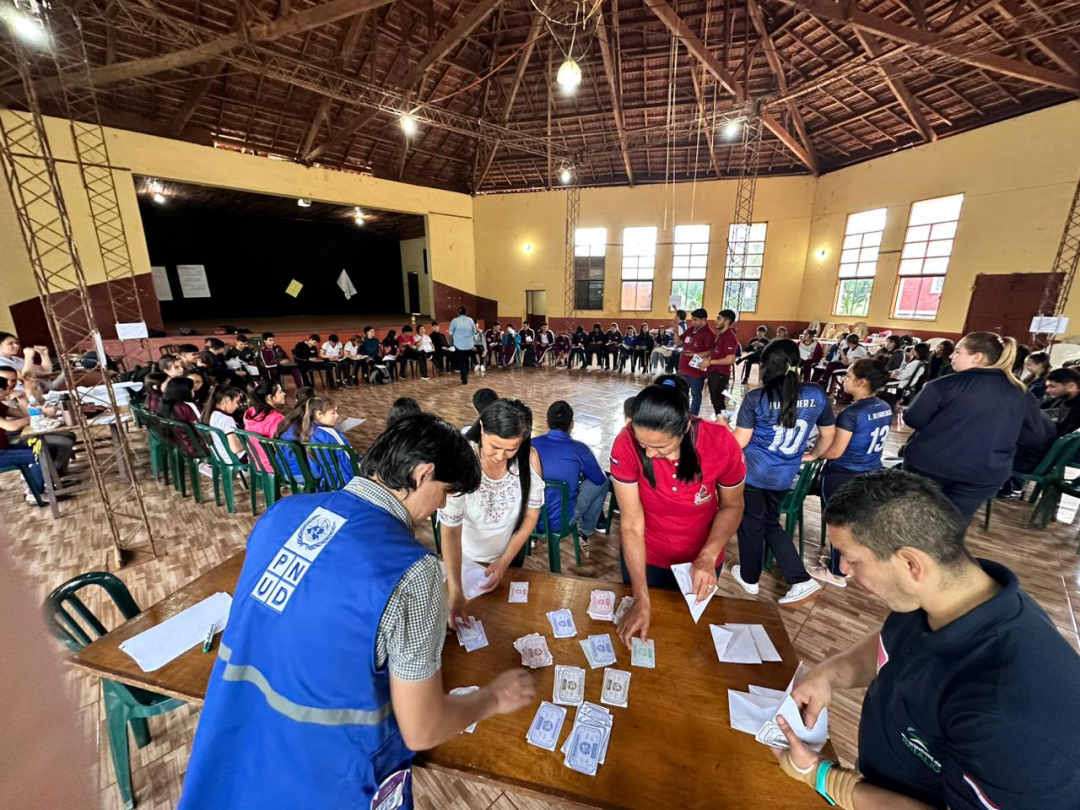Disclaimer:
Please be aware that the content herein is comprised of personal reflections, observations, and insights from our contributors. It is not necessarily exhaustive or authoritative, but rather reflects individual perspectives. While we aim for accuracy, we cannot guarantee the completeness or up-to-date nature of the content.
What is it? A citizen laboratory that promotes participatory, open, and experimental innovation to strengthen local democracy, activate community capacities, and build a more just and inclusive territory. Who promotes it? Promoted by the Municipal Government of Natalio, with facilitation from the UNDP Paraguay Accelerator Lab. What does it involve? The lab is a platform for experimentation and learning that combines participatory methodologies (such as citizen mapping, empathy interviews, open calls, etc.) with innovation approaches. Its goal is to explore community solutions to development challenges. What does it achieve? Builds a culture of participation and community engagement Creates space for intergenerational learning Supports citizen-centered innovation to solve public challenges Promotes environmental awareness and circular economy practices at the local level Development stage: Consolidated Origin and Actors Origin The Citizen Lab was launched as a pilot of the UNDP Accelerator Lab. Actors Involved Youth Network of Natalio: Young participants co-designed and facilitated lab activities Municipality of Natalio: Hosted and supported the initiative UNDP Paraguay: Technical support and methodology design through the Accelerator Lab Leave No One Behind Socioeconomic Base The territory includes small agricultural producers, youth, and women’s committees. The lab explicitly aimed to reach underrepresented groups, especially youth and low-income rural families. Gender Perspective Yes – women participated both in design and implementation. The Youth Network is composed of over 60% young women. Lessons Learned General Innovation requires adaptation: Participatory innovation processes must be tailored to the local culture and capacities. Community leadership is key: Youth-led facilitation increases legitimacy and ownership. Specific Mapping informal solutions helped uncover practices already underway in neighborhoods (e.g., homemade composting, community clean-up efforts) that could be strengthened. Visual and experiential tools (like waste maps or community prototypes) improved understanding and engagement. Short cycles of learning helped maintain momentum and motivation in the community.
 Consent to share form or official link.
Consent to share form or official link.

 4Quality education
4Quality education 11Sustainable cities and communities
11Sustainable cities and communities 12Responsible consumption and production
12Responsible consumption and production 13Climate action
13Climate action 16Peace, justice and strong institutions
16Peace, justice and strong institutions
Comments
Log in to add a comment or reply.